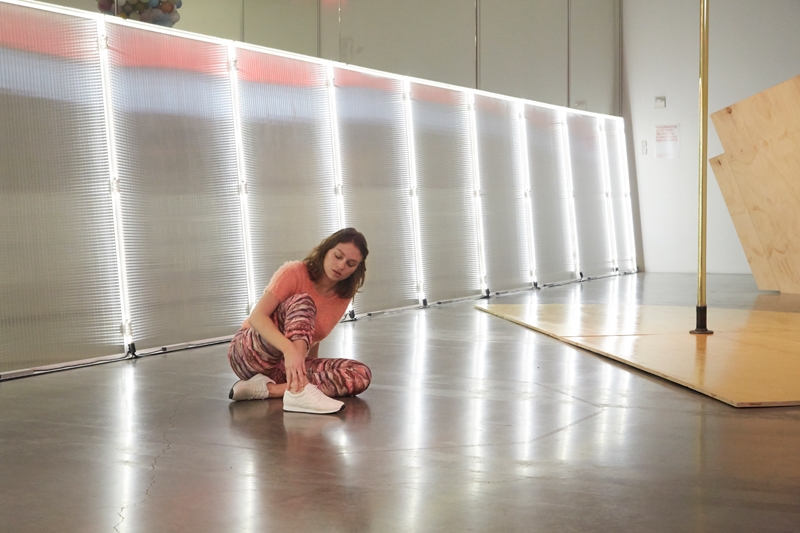The conversations that happen at the periphery of art shows are important, yet difficult to record. Changes in mood are rarely noted in official documentation, nor are the informal conversations that happen away from panel discussions and interviews. Yet this is how we change our minds about art, and how thinking develops. Not that we should be in the business of recording everything – the NSA does that for us – but with regard to performance, artists’ historical struggles with the deadening aspects of documentation have often hinged on problems with capturing vitality. Excluded elements might include some of the following: the weather, emotional atmosphere, smell, taste, the day’s events, coughs, stumbles, late arrivals or mistakes. Putting these issues centre-stage, several recent performances have sought to document informal movements, memories and chatter of audiences and performers by describing them with language in real time.
“An event took place here [X] days ago. This is what happened…” said dancer and artist Lauren Bakst repeatedly in Reverberations, a work that she performed in New York, in the New Museum’s lobby gallery, over the course of several weeks this past January and February, as part of Gerard & Kelly’s (duo Brennan Gerard and Ryan Kelly) exhibition P.O.L.E. (People, Objects, Language, Exchange). Each time I saw her perform, she was wearing a fluffy pale-pink sweater and patterned pink jeans with trainers, and described different micro-events that had occurred in the space over the course of Gerard & Kelly’s research residency at the museum. For example: 21 days ago a man had tried to take a picture of her performance with his iPhone and failed to do it properly; 20 seconds ago she brushed against a child’s foot by accident; 12 days ago, while she was trying to take a picture of a fellow dancer, she received a notification from an app she had downloaded earlier that, as she said during the performance I watched, was “keeping me updated on the progress of the protests that were happening outside, organised by Black Lives Matter. This was a day after the announcement of the non-indictment of Darren Wilson.”
The exhibition and Bakst’s performance summoned the museum as an active space for drawing in conversations that occur at the margins
Each of Bakst’s stories was accompanied by a repeated movement extracted from the story and transformed into choreography – a raised hand in front of the face with a final jerk of a thumb to signify a phone photograph, a gesticulation as someone struggled to articulate a point. Bakst also referred to Gerard & Kelly’s other programming in the space, which included an exploration of pole dancing on two poles with various dancers and teachers, including the Chosen Ones – a group that usually performs on the poles in subway cars – as well as a series of conversations with activists, writers and artists including Chris Kraus, Andrea Fraser and Heather McGhee, who they invite to talk to them on a bed that they dragged into the gallery space.
I’ve seen several performances that use performers’ bodies as vehicles for memory. Siobhan Davies Dance’s Table of Contents at the ICA in London in January 2014 was a live archive of the company’s choreography performed and reconfigured by the dancers as they described their memories of performing these works over time. Tino Sehgal’s participants in works such as These associations (2012) routinely describe their own memories to members of the public as a conversation starter. What was striking and exciting about Gerard & Kelly’s P.O.L.E., and Reverberations, is the way that they summoned the museum as an active space for drawing in conversations that occur at the margins, which then unfolded over the course of weeks. In Reverberations we heard about moments of conflict and confusion with speakers such as Fraser and Kraus, or among audiences, as well as performance memories. It felt as though the peripheral conversations in the gallery, and input from streets, subway cars, marches, nightclubs and beds, were drawn into the space and suggested as places or moments of significant exchange. It was a form of live research that seemed tangibly to grow over time and reach a high number of people in an intimate manner, so that audiences could take part – in moments that we would have otherwise missed – as we were channelled through the memories of a living being.
This article was first published in the May 2015 issue.
